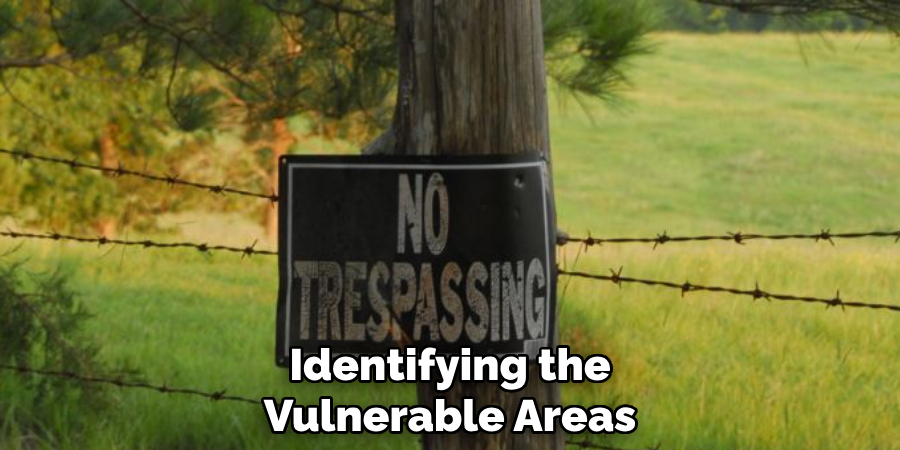Trespassing can be a significant concern for property owners, leading to potential damage, theft, or loss of privacy. While legal measures and physical barriers are essential, employing psychological tactics to scare away trespassers can also be highly effective.

This guide on how to scare trespassers will explore various strategies that can help deter unwanted visitors, ensuring your property remains secure and undisturbed.
From installing motion-activated lights to using signage and alarm systems, these tips will empower you to protect your space proactively.
What is Trespassing?
Trespassing is the act of entering someone else’s property without permission or legal right. It can occur in many different settings, including residential, commercial, and public areas.
Trespassing is a common problem that can cause significant stress and inconvenience for property owners.
It is essential to understand the legal definition of trespassing in your area, as laws and regulations may vary depending on the location. In most cases, property owners have a right to protect their land from unauthorized entry.
However, it is crucial to familiarize yourself with local laws before taking any action against trespassers.
Why Scaring Trespassers Can Be Effective
Scaring trespassers can be an effective way to deter unwanted visitors from entering your property. By employing psychological tactics, you can create an environment that feels unwelcoming or unsafe for potential intruders.
This approach can be particularly useful in situations where physical barriers are not enough or may not be feasible to implement.

Moreover, scaring trespassers can also serve as a warning to potential future trespassers. If word spreads that your property is well-protected and intimidating, it may discourage others from attempting to enter without permission.
Needed Materials
Before diving into the different strategies for scaring trespassers, it is essential to have the necessary materials on hand. These may include:
Motion-activated Lights:
Motion-activated lights are an excellent deterrent for trespassers, as they can startle and surprise them. They also make it easier to identify anyone who may be on your property at night.
Signage:
Signs that indicate the presence of surveillance cameras or warn against trespassing can be highly effective in deterring unwanted visitors. These signs can create a sense of being watched, making potential intruders think twice before attempting to enter your property.
Alarm Systems:
Alarm systems can serve as a loud warning to any trespassers that they have been detected. The sound of an alarm going off can be enough to scare off potential intruders, as they do not want to draw any attention to themselves.
8 Simple Step-by-step Guidelines on How to Scare Trespassers
Step 1: Evaluate Your Property
Before implementing any measures to scare off trespassers, it is crucial to thoroughly evaluate your property.
Start by walking around the perimeter and identifying any vulnerable areas where an intruder could potentially gain access. Take note of any blind spots, poorly lit areas, or spots with easy access over fences or through gates.

Assess the condition of your current security features, such as locks, fences, and lighting. Understanding the layout and vulnerabilities of your property will help you prioritize which areas need the most attention and ensure your efforts are both efficient and effective.
Step 2: Install Motion-Activated Lights
As mentioned earlier, motion-activated lights can be an effective way to startle trespassers and make them rethink their actions. These lights should be installed in areas where they are most likely to detect any movement on your property.
Consider placing them near entry points such as gates or doors, along pathways, and in blind spots. Make sure to test the sensitivity of the motion sensors and adjust them accordingly to avoid false alarms caused by animals or other harmless movements.
Step 3: Use Signage
Place visible signs around your property that warn against trespassing. You can also add signs that indicate the presence of surveillance cameras or security systems. These signs can serve as a deterrent for potential trespassers, as they do not want to get caught or be recorded.
Ensure that the signs are clear and easily readable from a distance. You can also consider using reflective materials or solar-powered lights on your signage to make them more visible during nighttime.
Step 4: Install an Alarm System
If you have the budget and resources, consider installing an alarm system for your property. These systems can range from simple door and window sensors to advanced motion detectors and sirens. The loud sound of an alarm going off can startle trespassers and potentially alert your neighbors or authorities.
Make sure to regularly test and maintain your alarm system to ensure it is in proper working condition. If possible, connect your system to a monitoring service so that they can respond promptly if the alarm is triggered.

Step 5: Make Use of Natural Barriers
Natural barriers such as thorny bushes or dense trees can be an effective way to deter trespassers. These types of barriers make it challenging for intruders to move around without being noticed, making them think twice about attempting to enter your property.
Consider planting these natural barriers along fences, near entry points, and in areas with a lot of foot traffic. However, make sure to maintain them regularly to avoid any overgrowth or fire hazards.
Step 6: Keep Your Property Well-Lit
A well-lit property can significantly decrease the likelihood of trespassers attempting to enter. Make sure to install adequate lighting around your property’s perimeter and any potential entry points.
Consider using motion-activated lights or timer-controlled lights that turn on automatically at specific times. These measures can create an illusion that someone is always home, making it less attractive for potential intruders.
Step 7: Utilize Visual and Auditory Deterrents
Visual and auditory deterrents can range from fake security cameras to loud noises such as barking dogs or alarms. These tactics aim to create the perception that your property is well-protected, making trespassers think twice before attempting to enter.
Place fake security cameras in visible locations to make them more believable. You can also use recordings of barking dogs or alarm sounds that trigger when motion is detected.
Step 8: Consider Using Non-Lethal Weapons
Non-lethal weapons such as pepper spray or stun guns can be effective for personal protection against potential intruders. However, these should only be used as a last resort and with proper training.

Make sure to follow all safety precautions, such as keeping these weapons out of reach of children. It is also essential to check the laws and regulations in your area regarding the use of non-lethal weapons for self-defense.
Following these guidelines on how to scare trespassers can help you effectively scare off trespassers and protect your property from unwanted visitors. Remember to always prioritize safety and follow any legal requirements when implementing security measures.
Stay vigilant, and do not hesitate to contact authorities if you feel unsafe or notice any suspicious activity on your property.
Additional Tips
- Consider investing in a security system that allows remote access so you can monitor your property even when you are away.
- Trim any overgrown vegetation or bushes around your property to eliminate potential hiding spots for trespassers.
- Install sturdy locks and reinforce doors and windows to make them more difficult to break through.
- Keep valuable items out of sight from outside the property. This reduces the temptation for intruders to attempt a break-in.
- Establish good relationships with your neighbors and form a neighborhood watch group to look out for each other’s properties.
Frequently Asked Questions
Q: How Can I Make My Property Less Attractive to Potential Trespassers?
A: You can start by implementing security measures such as installing motion-activated lights, using signs and fake cameras, and keeping your property well-lit. Additionally, consider using natural barriers and maintaining your property to make it less appealing for trespassers.
Q: Is It Legal to Use Non-Lethal Weapons on Trespassers?
A: The legality of using non-lethal weapons for self-defense varies by location. Make sure to check the laws and regulations in your area before purchasing or using these weapons. In some cases, proper training and a license may be required.
Q: What Should I Do if I Notice Suspicious Activity on My Property?
A: If you feel unsafe or notice any suspicious activity on your property, do not hesitate to contact the authorities. It is always better to be safe than sorry, and they can help assess the situation and take appropriate action if necessary. Remember to prioritize your safety at all times.
Q: Can I Use Deadly Force to Protect My Property from Trespassers?
A: The use of deadly force should always be a last resort, and its legality varies by location. It is crucial to check the laws and regulations in your area regarding self-defense and the protection of property. It is also recommended to seek legal advice before taking any action involving deadly force.
Conclusion
Protecting your property from trespassers requires a combination of strategies and diligence. By implementing these simple guidelines on how to scare trespassers, you can significantly decrease the chances of unwanted visitors on your property.
Remember to regularly evaluate and maintain your security measures to ensure their continued effectiveness in scaring off trespassers. Stay vigilant, stay safe!
About
Safety Fic is a distinguished figure in the world of Diy design, with a decade of expertise creating innovative and sustainable Diy solutions. His professional focus lies in merging traditional craftsmanship with modern manufacturing techniques, fostering designs that are both practical and environmentally conscious. As the author of diy, Safety Fic delves into the art and science of Safety Fic-making, inspiring artisans and industry professionals alike.
Education RMIT University
(Melbourne, Australia) Associate Degree in Design (Safety Fic) Focus on sustainable design, industry-driven projects, and practical craftsmanship. Gained hands-on experience with traditional and digital manufacturing tools, such as CAD and CNC software.
Nottingham Trent University
(United Kingdom) Bachelor’s in diyfastly.com and Product Design (Honors) Specialized in product design with a focus on blending creativity with production techniques. Participated in industry projects, working with companies like John Lewis and Vitsoe to gain real-world insights.
Publications and Impact
In diy, Safety Fic his insights on indoor design processes, materials, and strategies for efficient production. His writing bridges the gap between artisan knowledge and modern industry needs, making it a must-read for both budding designers and seasoned professionals.
